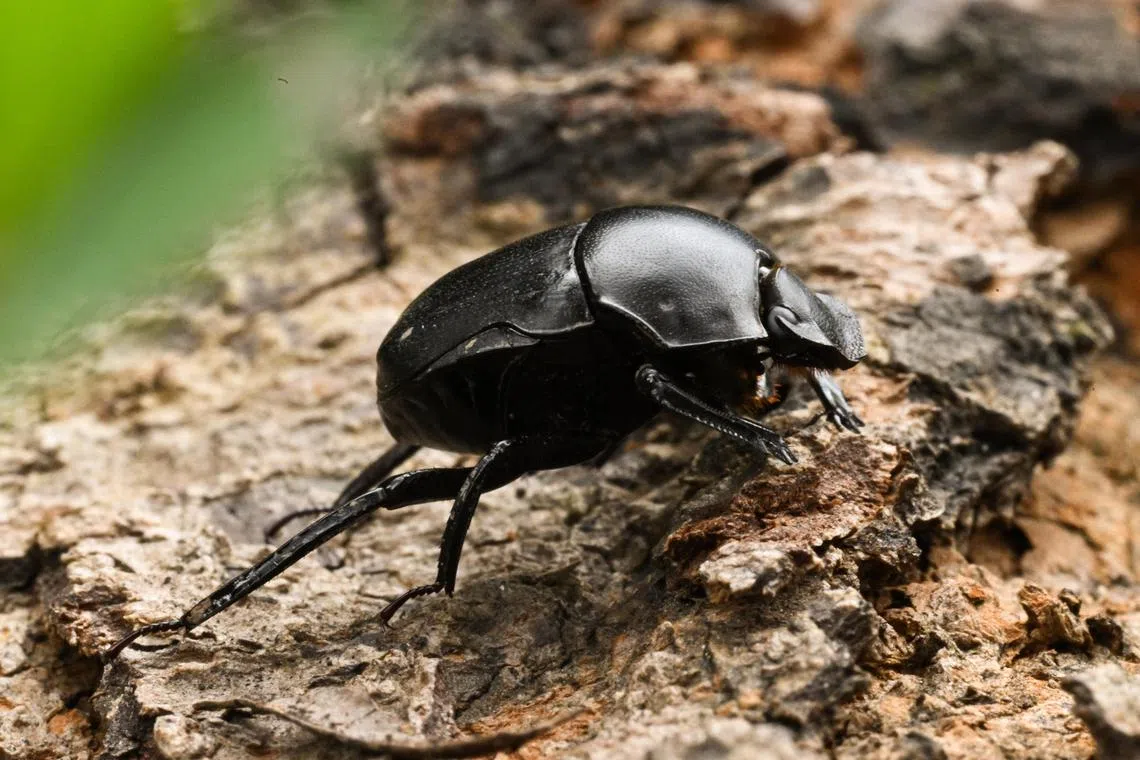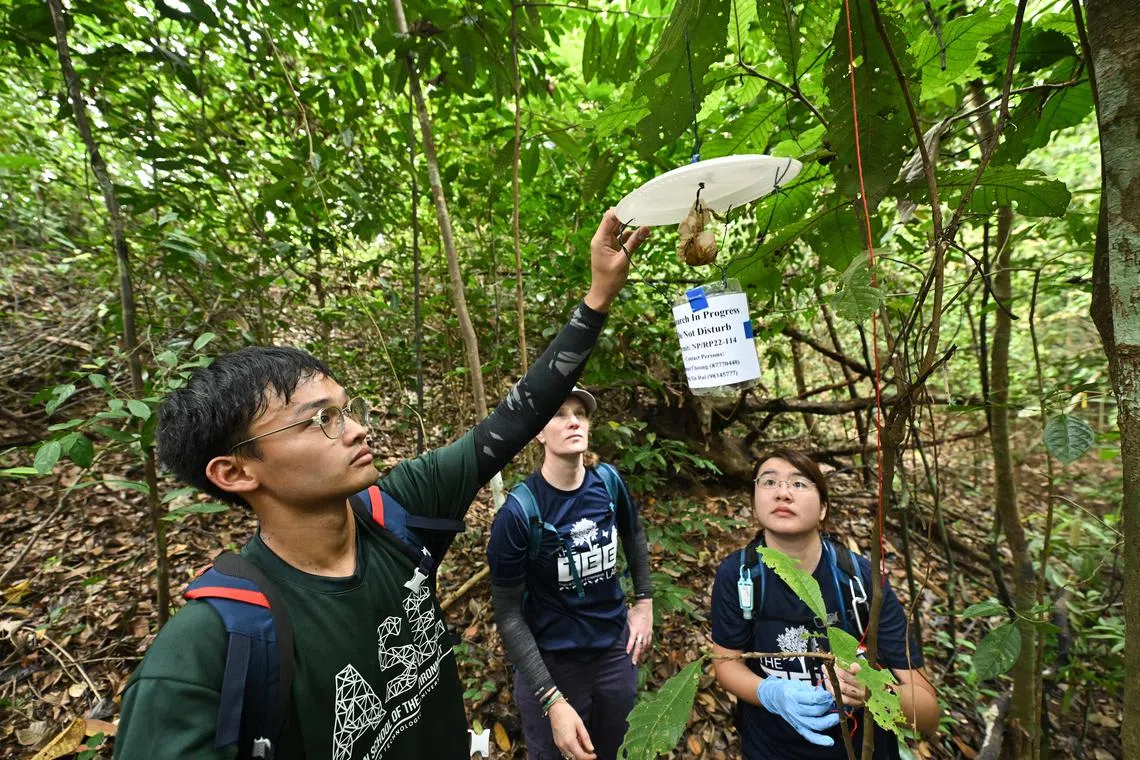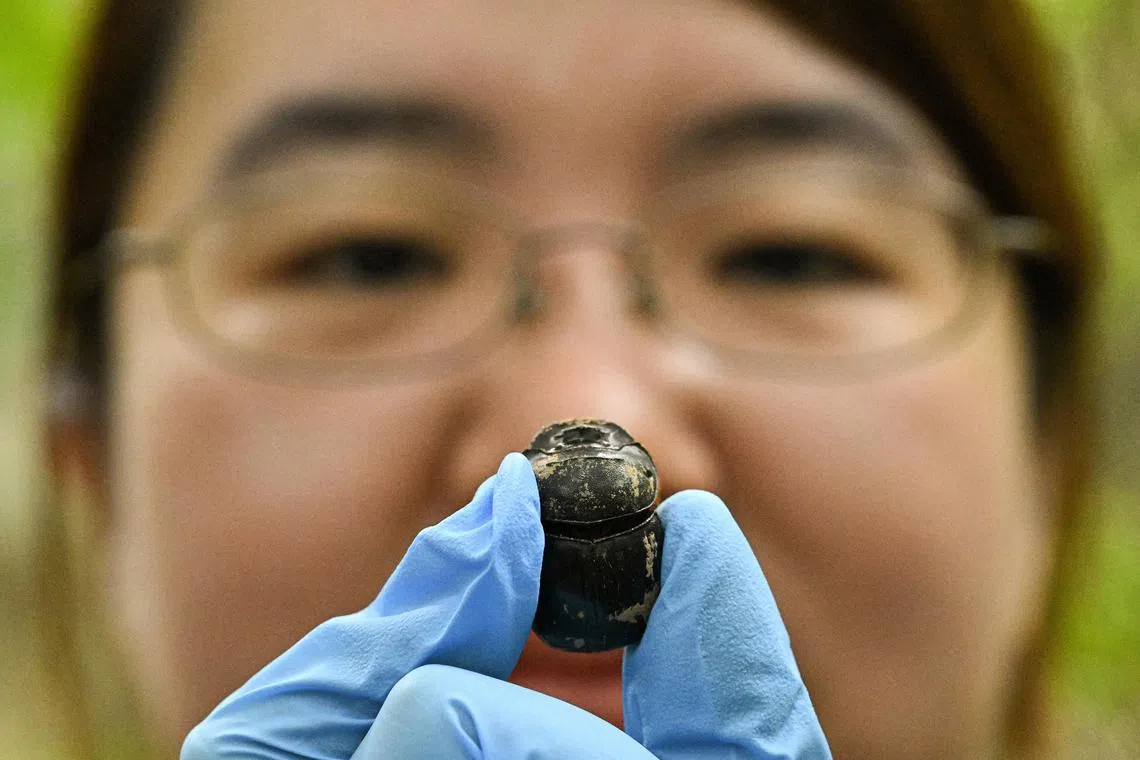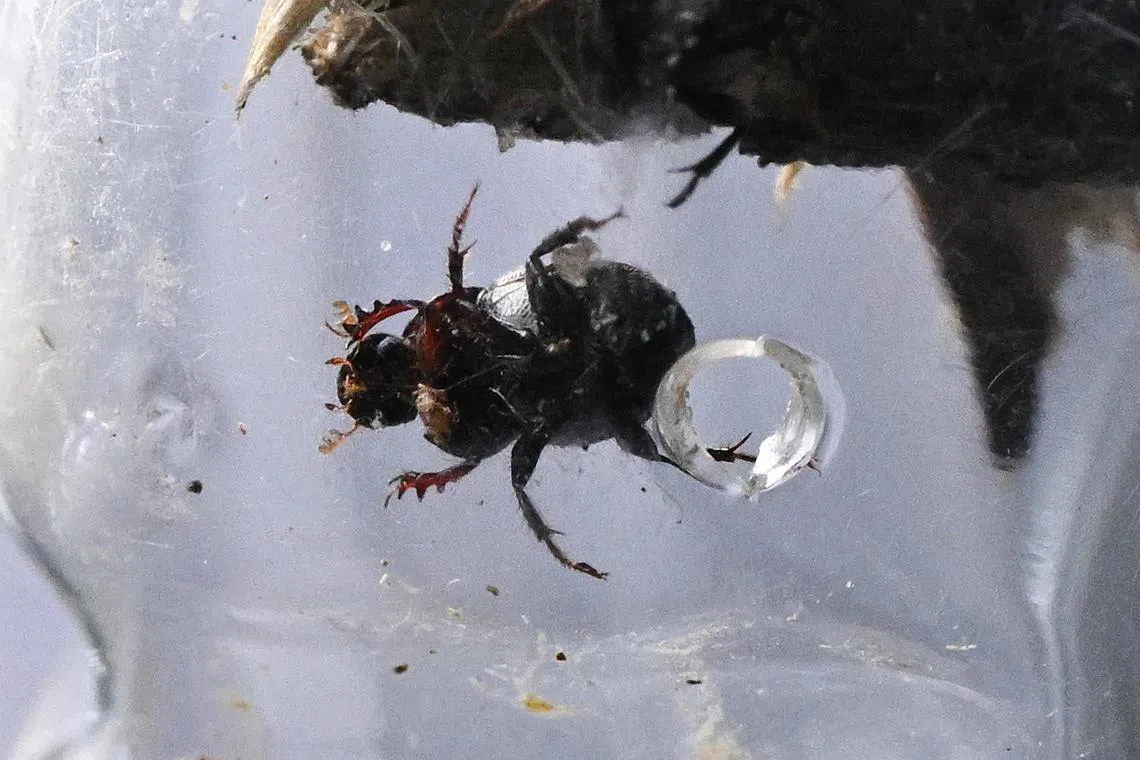NTU researchers charting the world of Singapore’s dung beetles
Sign up now: Get ST's newsletters delivered to your inbox

Singapore has only one known roller dung beetle species, the Paragymnopleurus maurus.
ST PHOTO: LIM YAOHUI
Follow topic:
SINGAPORE – While people are turned away by the smell of poop, a certain species of beetle thinks the world of mammal faeces, since they are essential for its nutrition and reproduction.
Dung beetles are the ecosystem engineers of the forest. They move collected dung into secret underground chambers or roll it into large balls to be buried elsewhere, to serve as food depository and place of nesting.
In doing so, they play an important role in helping to return the nutrients found in animal dung to the soil, nourishing it and allowing other organisms to thrive.
The dung beetle, then, can offer scientists an indication of how healthy a forest ecosystem is.
Researchers from the Nanyang Technological University’s (NTU) Tropical Ecology and Entomology Lab at the Asian School of the Environment are currently surveying the Central Catchment Nature Reserve to determine the presence of dung beetles.
This comes under biodiversity surveys conducted by the National Parks Board which are expected to last until 2025.
PhD student Ong Xin Rui, who is leading the research effort with undergrad Samuel Cheong, told The Straits Times that little is known about the dung beetles of Singapore – how many species live here, what is their natural history and where on the island they can be found.
The best place to locate them, she said, is the Central Catchment Nature Reserve – the largest remaining patch of lush forest in the heart of Singapore.
“However, we currently lack up-to-date records of their diversity and distribution within these core forest areas,” added Ms Ong.
She said that the reserve is also home to various mammals, ranging from the commonly seen macaques and wild boars to elusive ones, such as langurs, mousedeer and pangolins.
“In South-east Asia’s tropical forests, human impact, such as the conversion of forests to agricultural ecosystems, have affected mammal populations, which in turn would affect the diversity and abundance of dung beetle populations due to changes in available mammal dung resources,” she added.

The team had placed their dung beetle traps close to existing camera traps, so that they could compare the distribution of the dung beetles with that of resident mammals there.
ST PHOTO: LIM YAOHUI
Hence, dung beetles are “excellent indicators” of the impact of habitat changes on mammal populations.
The team had placed dung beetle traps close to existing camera traps, so that it can compare the distribution of the dung beetles with that of resident mammals there. Both kinds of traps are spaced out in grids to cover the whole forest.
DNA tests will be conducted on the dung beetles captured to identify their species, as well as trace the DNA of animals in the forest based on dung consumed by these beetles, said Dr Eleanor Slade, who is an assistant professor at NTU’s Asian School of the Environment.

PhD student Ong Xin Rui holding up a Catharsius renaudpauliani dung beetle found inside a dung beetle trap.
ST PHOTO: LIM YAOHUI
“We might even discover dung beetle species that are new to science,” added Dr Slade.
“In our recent surveys, we were very excited to find Singapore’s largest dung beetle species, Catharsius renaudpauliani. This species is a large nocturnal tunneller species able to remove large amounts of dung at a given time.”
Tunnellers are more frequently found in Singapore and South-east Asia. These dung beetles are known for digging tunnels beneath a pile of dung and moving balls of dung underground to lay their eggs.
Since a significant amount of dung is required to sustain these Catharsius renaudpauliani populations, their presence in the forest is indicative of healthy mammal populations living alongside them, said Dr Slade.
Roller beetles, who have hogged the limelight in the likes of National Geographic documentaries for rolling their dung balls away from the dung pile for “safe-keeping”, are not as common in this region, she added.
Singapore has only one known roller dung beetle species – the Paragymnopleurus maurus – and it has been occasionally spotted in the team’s surveys.
Both species are not commonly found in areas beyond undisturbed forest habitats, and their presence is often indicative of healthy mammal populations and good forests, said Dr Slade.

A dung beetle inside a dung beetle trap at Upper Pierce Reservoir, on Feb 8, 2023.
ST PHOTO: LIM YAOHUI
At least 10 beetle species have been recorded thus far in the surveys, which began in January, she noted.
The team’s research project would also help to provide more information on the conservation status of these insects, which remain under-studied globally.
In the International Union for Conservation of Nature (IUCN) red list, only 8 per cent of around 150,000 assessed species are insects, with fewer than 800 of all assessed species being dung beetles.
Most dung beetle species have been labelled as “data deficient”, highlighting the need for more baseline data to determine their conservation status, said Dr Slade.
Once the NTU team has collected sufficient data on the dung beetles found in Singapore, it will examine how these beetles respond to environmental changes, which would then help the researchers to determine their conservation status, she added.
Ms Ong said that based on historical surveys and past data, some dung beetle species may have already gone extinct.
For example, dung beetles from the genus Copris, a type of tunnelling species, and the genus Sisyphus, a type of roller species, were discovered by explorer and naturalist Alfred Russel Wallace in the 1800s. However, they have not been identified in biodiversity surveys since, she noted.
“It is still uncertain why they aren’t present in Singapore, as they can still be found in parts of Peninsular Malaysia and the wider South-east Asian region,” said Ms Ong.
“This further highlights the importance of having good baseline data on dung beetle distribution, which is not just limited to the context of Singapore.”


